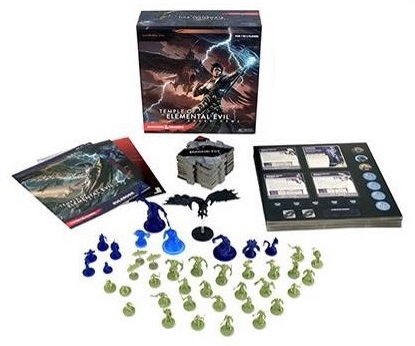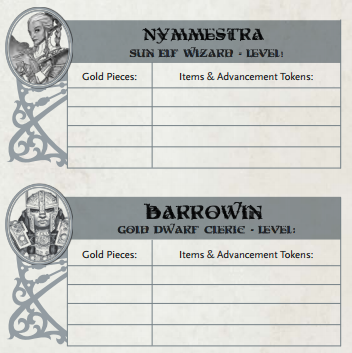

One of the first cooperative board games we ever covered here at Co-Optimus was Castle Ravenloft. Released in 2010, this vampire-themed tabletop dungeon crawl was the first of the Dungeons & Dragons Adventure System games. It was quickly followed by two more games in the series, Wrath of Ashardalon and Legend of Drizzt. Fans thought the series was complete, but Temple of Elemental Evil surprised us all upon its release last spring. So how does the latest D&D Adventure System title stack up against the others? We’ll take a look in this month’s Tabletop Co-Op.
The D&D Adventure System is a simple, but very effective set of gameplay mechanics. Up to five players take on the roles of characters from a variety of D&D’s iconic classes. The dungeon is built by exploration, and each new tile placed brings danger in the form of monsters or random events (and sometimes both). Each monster has a unique set of tactics, and as the players team up to take down monsters, they earn experience and find treasure. Each game comes with a large variety of scenarios to play through, providing lots of replay value. You can even combine elements from each game via homebrew or fan-created content. It’s a great system, and works together very well, as a good co-op game should.

Temple of Elemental Evil is loosely based on the classic D&D module of the same name. The titular temple contains cults devoted to powers hailing from the elemental planes of earth, air, fire, and water. As you might expect, there are lots of cultists running around, and more than the typical share of elemental creatures residing within. The original module was famous for being one of the first megadungeons, making it a fine choice for interpretation as a dungeon crawl boardgame.
One of the biggest differences between Temple of Elemental Evil and the prior games in the series is the assumption of campaign play. While there were rules for campaign play in prior games, it seemed something of an afterthought, included only due to player demand. Temple of Elemental Evil puts the campaign first and foremost. Players begin the first scenario trapped inside the temple, and once they escape, they can spend gold to upgrade their characters before heading back in for the next scenario. There’s even a spot in the rulebook to record your purchases in case you forget from one session to the next.

The connected nature of the campaign goes beyond character improvement, though. At the end of each scenario, more monster and encounter cards are added to the appropriate decks. The more you play, the better the characters get, so more difficult monsters and nastier encounters are needed to challenge them. I really enjoyed this aspect of the game. Even if you don’t know what cards have been added, it’s more exciting to draw a monster when you know it just might be something you’ve never fought before, instead of water cultist #12. The sense of progression from one scenario to the next is much more meaningful than the rather tenuous connections of scenarios in the previous games.
But the continuity of the campaign system is not the only addition to the Adventure System found in Temple of Elemental Evil. Perhaps the most obvious, in hindsight, is the way monsters are handled. In prior games, when you drew a new tile, it would always have one monster on it (unless you were playing one of the few scenarios with special rules for this, of course). While there was a variety in which monster would appear, based on the card you drew, you pretty much knew what to expect. In the new game, each tile has between zero and three monster squares on it. This adds an incredible amount of tension to the simple act of drawing a new tile. Will you get lucky, and draw an empty room? Or will a cultist and two gnolls appear instead? I suspect that the average is still very close to one per tile, but the uncertainty will keep cautious players on their toes.
Another welcome change is a revision of the trap system. Good dungeons have traps, that’s par for the course, but the implementation in the first three Adventure System games was somewhat clunky. Traps were part of the encounters deck, and were represented by large tokens placed wherever players chose on the target tile. In Temple of Elemental Evil, traps are represented by symbols on on individual squares on certain tiles. Small tokens are placed on these tiles, and if a player chooses not to disarm them, they go off when stepped on. These traps are much more difficult to avoid, and often block squares that would otherwise be great places to explore, or fight more effectively. The trap system feels more authentic to the classic dungeon crawling experience, and more thematic as a result.
Temple of Elemental Evil takes the solid foundation of previous D&D Adventure System games and adds to it considerably. The campaign is a great way to spend time with a regular game playing group. The tweaked monster and trap rules are a straight upgrade to the mechanics of prior games. If you didn’t like prior games in the series, I don’t think Temple of Elemental Evil will change your mind. However, if you played and enjoyed any of the others, the latest game is certainly worth checking out. Temple of Elemental Evil is clearly the best game of the lot, and one of the finest Tabletop Co-op games available.